Respectus Philologicus eISSN 2335-2388
2023, no. 44 (49), pp. 25–39 DOI: http://dx.doi.org/10.15388/RESPECTUS.2023.44.49.105
Multimodal Representations of Lithuanian Brands: The Case of “Džiugas”, “Rūta” and “Pieno žvaigždės”
Saulė Juzelėnienė
Vilnius University Kaunas faculty
Muitinės st. 8, LT-44280 Kaunas, Lithuania
Email: saulute.juzeleniene@knf.vu.lt
ORCID iD: https://orcid.org/0000-0002-5110-3208
Research interests: Semiotics, Intersemiotic translation, Discourse analysis, Multimodality
Aistė Stvolaitė
Vilnius University Kaunas faculty
Muitinės st. 8, LT-44280 Kaunas, Lithuania
Email: stvolaitea@gmail.com
ORCID iD: https://orcid.org/0009-0006-3344-0418
Research interests: Advertising, Multimodality, Brand imaging
Abstract. Figurative representations of brand images have not been thoroughly studied in Lithuanian linguistics. The present research aims to investigate the multimodal metaphors and metonymies explored by the famous Lithuanian corporate brands Džiugas, Rūta and Pieno žvaigždės. The work examines how the multimodal metaphors and metonymies of the brands are cognitively structured from the perspective of illustrations, logos and layout. The interaction of verbal and visual elements in corporate discourse is particularly important when expressed using graphics, logos and layout for the corporate mission statements, descriptions of the brand history and other materials available on their websites. The analysis reveals that the most frequent source domains for brand imaging are PERSON/LIVING ORGANISM, SUCCESS, TRADITIONS and CAUSE FOR EFFECT, PART FOR WHOLE, PRODUCT FOR PRODUCER metonymies, among others. In the case of personification, the brand is defined as an individual who possesses the qualities highly valued in corporate discourse: growth, positivity, adaptability, dynamism and collaboration. These metaphors facilitate a better understanding of the brand and contribute to the formation of a persuasive brand image that resonates with consumers. The analysis of the multimodal manifestations of brand identity in the cases of Džiugas, Rūta and Pieno žvaigždės reveals the intricate interplay of metaphor and metonymy in constructing and conveying meaning across various modes of representation. Each brand’s illustrations, logo and layout incorporate visual elements, typography, and colour palettes that contribute to their unique identities and evoke specific associations.
Keywords: multimodal metaphor; conceptual metaphor; multimodal metonymy; brand image; corporate branding.
Submitted January 20 2023 / Accepted June 27 2023
Įteikta 2023 01 20 / Priimta 2023 06 27
Copyright © 2023 Saulė Juzelėnienė, Aistė Stvolaitė. Published by Vilnius University Press. This is an Open Access article distributed under the terms of the Creative Commons Attribution License CC BY 4.0, which permits unrestricted use, distribution, and reproduction in any medium provided the original author and source are credited.
Introduction
This research aims to examine the usage of multimodal metaphors and metonymies in the communication of Lithuanian companies. The objectives of this study involve the identification and interpretation of visual and verbal interaction in multimodal metaphors constructed on the websites of these brands.
A brand is understood as a means of communication with consumers to create a certain image of the company in the market to impress potential buyers and retain existing ones. It is important for every company to build a strong, reputable brand image and maintain the created image as it impacts the success of a business. The brand includes the name, logo, design, colour scheme, slogan, and advertising (Keller, 1993; Kotler, Armstrong, 2010).
In the context of brand imaging, Rossolatos (2018) discusses the conceptualization of a brand image from the perspective of semiotics, such as the traditional and cultural branding streams influence understanding concepts of brand symbol and brand icon. Further, the researcher also discusses the transformation of brand imagery into brand image concepts.
According to Koller’s (2009) research, corporate brands are most frequently structured by employing conceptual metaphors such as BRANDS ARE LIVING ORGANISMS or BRANDS ARE PEOPLE. Metaphorization aids in enhancing consumer understanding and comprehension of the brand. By associating the brand with a person or living organism, a brand can grow, develop, show interest, understanding and care for the consumer. Metaphoric mapping includes the interaction of verbal, visual, and sound modes, as Koller (2009) emphasised, “in particular the illustrations, logos, and layout”.
Conceptual Metaphor Theory (CMT), proposed by Lakoff and Johnson (2008), involves understanding one idea or conceptual domain, usually abstract, in terms of another. In recent decades, the theories labelled as multimodal metaphor theory (Forceville, 2006, 2009), plurisemiotic translation (Gambier, Juzeleniene, Petroniene, 2021) or intermediality (Rottner, 2022) have allowed the researchers to construe metaphors as mapping across various modes, such as visual, verbal, sound etc. The interplay of sounds, images, touch, smells, and tastes increases the likelihood of attracting people’s attention, prompting marketers typically try to reach the public through a variety of channels. (Forceville, 2021).
In their studies, Forceville (2006, 2009, 2021), Kappelhoff and Müller (2011) have distinguished several modes of communication, including pictorial signs, written signs, spoken signs, gestures, sounds (music and other), smells, tastes, and touch, forms of acoustic mode. The modes of speech, music, and sound as means of communication have also been addressed by van Leeuwen (1999).
Forceville’s multimodal metaphor theory (2017) is foregrounded by the idea that in the case of multimodal metaphor, certain visual or meaningful similarities between target and source must be based on a structural, spatial or ontological relationship. In this case, the concepts representing different categories can be interconnected, creating figurative meaning. It is also noted (Forceville, 2006) that multimodal metaphors imply new properties on the structure of the target domain, especially when this domain is unclear or absent – the properties from the source domain are moved, creating a structure in the target domain and adding new meanings to it. While construing the multimodal metaphor, the identification of the features mapped on the target domain becomes important.
The interpretation of multimodal metaphor relies on the context, verbal or others. The connections between the source and the target domains are based on underlying metaphoric models. According to Koller (2009, p. 64), verbalizations of inferred conceptual metaphors are prompted to some extent by the verbal formulation of the analysed expression in the case of verbal metaphors. The author also argues that traditional A is B type of metaphor limits the interpretation of the complex multimodal metaphors and while referring to Musolff (2006), states that metaphor scenario is a better term allowing to include different levels of abstraction as well as cause-effect relations. According to the author (Musolff, 2006, p. 35), the scenarios may carry evaluative and attitudinal biases, related to “particular political dispositions, preferences of the respective national discourse communities”. To capture attitudinal preferences and discursive trends, it is necessary to move “beyond the domain-level and focus on specific scenarios and their argumentative uses” (Musolff, 2006, p. 35).
Multimodal metaphors implying positive or negative evaluation activate and manifest certain mental models, including “moralized activities, <…>, for example, <…> metaphoric reference to companies as “corporate citizens” (Koller, 2009; van Leeuwen, 1999). The positive connotations implied by the brand affect and form consumers’ attitudes on what should be neglected and what is desirable and positive.
Multimodal metaphor, with its ability to incorporate different modes of communication, visual ones, in particular, makes communication strategically attractive and persuasive internationally. With the help of multimodal metaphors companies create certain images in the consumers’ minds. Multiple researchers, including Forceville (2017), Pollaroli and Rocci (2015), Phillips and McQuarrie (2004), and Rottner (2022), have conducted analyses on multimodal metaphors in advertising discourse, which indicates that there is existing scholarship dedicated to exploring the use of various modes, such as visuals, language, and sound, to create metaphoric messages in advertisements. The studies investigate how multimodal metaphors function and contribute to the persuasive and communicative aspects of advertising.
Many scholars claim that metaphor and metonymy are highly interconnected and the boundary between them is often vague. According to Kashanizaded and Forceville (2020, p. 82) metaphor relies on “the relationship between the domains is based on analogy (A is [like] B) or co-referentiality”, while metonymy is based on contiguity, or close, existing association (A stands for B). Kashanizaded and Forceville (2020, p. 82) indicate the intensiveness in the case of metaphor and extensiveness in the case of metonymy “creates perspective through symbol, wherein the symbol stands for what is symbolized”.
Littlemore (2018, p. 481) notices that “Metonymy is an important means of communication as it allows people to formulate and express ideas succinctly”. By admitting the lack of research in the area, in their research on the interaction of metaphor and metonymy in advertising discourse, Littlemore and Pérez-Sobrino (2017, p. 197) notice that metaphor and metonymy “can be combined in both words and images, in increasingly complex ways”. In her research on the use of creative metaphor (2022, p. 106), Littlemore notices that in the case of creativity, we talk about ‘the “creative use of metonymy” and “the creative use of metaphor”, rather than “creative metaphor” and “creative metonymy” per se, as these terms may set up an expectation that there will be a completely new mapping”. It follows that even apparently ‘novel’ metonyms most likely draw on existing metonymic relationships that have been discussed and widely established in the literature, such as: PLACE FOR EVENT, EFFECT FOR CAUSE, PRODUCER FOR PRODUCT, EFFECT FOR CAUSE, OBJECT FOR USER/INSTITUTION; SUBSTANCE FOR FORM; PLACE FOR EVENT; PLACE FOR PERSON; PLACE FOR INSTITUTION; INSTITUTION FOR PEOPLE and so on (see Radden & Kövecses, 1999; Lakoff, Johnson, 2008; 2013).
While indicating the closeness of metaphor and metonymy Kashanizadeh & Forceville (2020, p. 82) observe the importance of conceptual domains, stating that in the case of metaphor, the things combined belong to different conceptual domains (e.g., LOVE IS A JOURNEY), and in metonymy, they both represent the same conceptual domain (e.g., “count noses”).
In the case of metonymies used in brand advertising and brand imaging Koller indicates that a corporate brand has to be separated from its products, at the same time emphasising the idea that a corporate brand is a metonymic condensation of what a corporation regards as the most desirable values in their institution (2009). On the other hand, Askegaard (2006) notes that products are the tangible manifestations of a brand, and by projecting an idealized images of itself, the company also tries to form the sociocognitive perspective. As the research shows, in order to meet stakeholders’ expectations, brands try to conceptualise their companies and, in many cases, the products as living beings or people “up to the point where brands become metaphorical people interacting with stakeholders” (Koller, 2009). The personification of a brand allows the consumer to consider the brand as an equal companion, bringing him the desired qualities, and pleasures, encouraging his healthy living, etc. With the help of attractive interaction of images and verbal text, the consumer is engaged in symbolic exchange, where health, beauty, youth, patriotism, etc., are offered to the consumer in the form of products in exchange for money. The symbolic gestalt created by the company is created with the help of multimodal “texts, such as logos, architecture, office design, call centre music etc.” (Koller, 2009; Cappetta, Gioia, 2006; Baruch, 2013). According to Forceville (2006, 2009, 2017), anthropomorphic multimodal metaphors are frequently employed by particular genres, especially in advertising, as it is one of the most persuasive tools in communication. According to the researchers Alvarez and Fournie (2016), in the case of anthropomorphized brands, commercial communication with the consumer becomes similar to interpersonal interactions: people prone to control others prefer brands that establish themselves as servants. The socio-cultural aspects are also important in anthropomorphisation – consumers from more economically developed countries are more likely to anthropomorphise brands.
The investigations in the area of brand relationship theory are interrelated with the research of brand imaging from the perspective of cognitive linguistics, conceptual metaphor and multimodality theories. Therefore, the investigations that highlight competition in family and society links in which brand relationships are embedded are needed for a fuller picture (Alvarez, Fournie, 2016).
1. Methodology
The research based on a corpus collected from brand mission statements represents the corporate’s ideal self. The materials consisting of verbal and pictorial representations of the corporate mission statements were presented on companies’ websites under the headings “About us”, “News”, and “Products”. The headings allow the companies to introduce their values, goals, aspirations, expectations, etc., to the corporate employees as well as consumers. The selection of the Lithuanian corporate brands was based on the lists of the best Lithuanian brands, such as Sustainable Brand Index™ 2020–20221, the list of the most recognized Lithuanian brands abroad2, the list of nominees for the competition “The annual “Lithuanian Product of the Year” (2020–2022), organized by “The Lithuanian Confederation of Industrialists”3. These lists claim to reflect the consumers’ choices and are ascribed as being considered influential and important by the Lithuanian business community. For this research, the 3 Lithuanian companies, such as Džiugas, Rūta and Pieno žvaigždės were selected, building a corpus of 1500 words along with the images.
As previously mentioned, it is expected that the texts that come from the sections “About Us”, “Mission and Vision”, and “History” represent the essential elements important for the construction of multimodal metaphors and metonymies. As a multimodal genre, the mission statement serves the communicative purpose of fostering consumer loyalty. According to Koller (2009), major parameters, in this case, are “hyperbole as realized in superlatives (“the best customer experience”), quantifiers (“each,” “everywhere”), inclusive “we” and high-affinity deontic modality (“it has been necessary to do so”) (Fox, Fox, 2004, p. 43, 171; Koller, 2008).
The research question focuses on revealing how multimodal metaphors can be construed using verbal and pictorial modes. The aim is to explore the ways these/such multimodal metaphors and metonymies construe brand image. To address this question, visual and pictorial texts representing corporate communication were collected from the websites of various companies.
The multimodal metaphors and metonymies were construed separately for each brand, first identifying verbal representations and, when available, including images. The research is based on the theoretical model introduced by Koller (2009) and the multimodal metaphor theory elaborated by Forceville (2006, 2009). The first level of investigation encompasses the selection of the materials into three main perspectives; firstly, it is the analysis of illustrations available on companies’ websites; secondly, logos and logo elements, visualizing specific brand characteristics are taken into consideration; the third perspective includes layout as a context that anchors source domains of multimodal metaphor, especially, when verbal and design elements in the corporate colour are connected producing multimodal metaphors and metonymies
2. Analysis
As previously mentioned, the analysis of the data was based on the methodology developed by Koller (2009), where the author identifies three main complexities, such as illustrations, logos and layout. The three elements are explored to identify the manifestation of multimodal metaphors and metonymies. It should be noticed that the depicted verbal components usually anchor the implications of the pictorial elements and the construction of the conceptual metaphors.
2.1. Illustrations
The investigation of illustrations involved the identification and construction of multimodal metaphors. As a result, the perspective of the illustrations allowed us to construe multimodal metaphors BRAND IS PERSON/LIVING ORGANISM, BRAND IS NATURAL GROWTH / FINANCIAL SUCCESS / COMPETITON.
The illustrations on corporate websites usually include the company’s values, vision, mission, and attitudes stated under the titles “Our mission and vision”, “About Us”, and “History”. According to Koller (2009), these subsections on corporate websites provide data which helps to determine the multimodal metaphoric brand identity and project it as an image.
One of the examples is the brand Džiugas, a cheese production company successfully operating in Lithuania and abroad. From 2020 to 2022, it has been nominated as one of Lithuanian’s most sustainable and popular brands.
The name of the brand originates from a legendary Samogitian giant Džiugas, which is visually elaborated (Fig. 1) and verbally described in the first example.
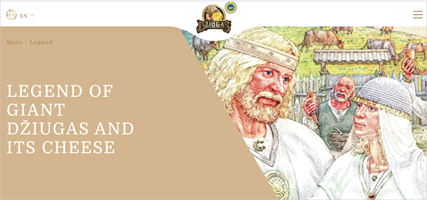
Fig. 1. Illustrations from the “Džiugas” website (Printscreen, retrieved from https://www.Džiugashouse.lt/en/legend/)
The picture portrays a stylized image of the giant Džiugas and some individuals wearing white, ancient robes behind him. The picture is accompanied by the text “Legend of giant Džiugas and its cheese”. In the text portion explaining the illustration, the origin of the name of Džiugas is told:
1) Samogitian legend says that Džiugas was a giant and a strong warrior, who lived in Samogitia in the old days and protected it against invaders. <…> The giant Džiugas and his wife Austelė showed their guests a strong, large and delicious cheese – all guests loved it and thus much more of this cheese was made. <…> While the recipe of the cheese was passed down for generations This is the true story of DŽIUGAS® name and thus the cheese is also often referred to as legendary.
This story of Džiugas conveys a message to the consumer that the corporation, as well as the cheese products they produce, is intertwined with legend, indicating the company’s values: strength, preservation of historical and cultural inheritance related to the character of the Samogitian hero. The target domain, the brand DŽIUGAS, is expressed verbally by mentioning the name of the brand, while the source domain, the SAMOGITIAN GIANT DŽIUGAS/ PERSON, is rendered verbally and visually. Therefore, the metaphor BRAND DŽIUGAS IS PERSON may be construed by mapping the features of uniqueness, traditions, and strength of character.
Personification is also evident in another popular brand Pieno žvaigždės. The company verbally presents itself through a short form of credo (Fig. 2).
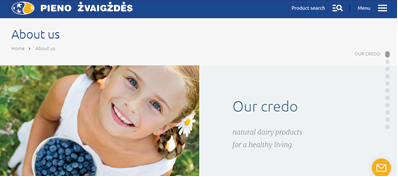
Fig. 2. Illustration from Pieno žvaigždės website (Printscreen, retrieved from https://pienožvaigždės.lt/com/en/aboutus
Visually the image of a smiling girl with a jar of freshly picked berries is positioned. The girl is smiling and gazing upwards – a childish way to look up to the adults. The smile on her face, along with other elements in the picture, connotes naivety, openness, joy and happiness. The credo statement “the natural dairy products for a healthy living” emphasises health and vitality. The visuals, along with the verbal elements, allow the construction of the metaphor BRAND PIENO ŽVAIGŽDĖS IS PERSON.
Another interpretation of the interrelation between the brand name and the image of the girl is through a metonymic perspective, involving cause and effect type of metonymy. According to Herrero-Ruiz (2018), “the source of the metonymy (i.e. the effect) is a subdomain of the target (the cause), which provides us with the main elements in order to generate the metaphoric mapping, i.e. the output of the metonymic mapping is the input to the metaphor”. In this case, the cause-effect relationship is associated with a message that consumption of the brand’s products (cause) will lead to health and happiness (effect). The interrelation of metaphor and metonymy is more vividly manifested in the case of personification.
The financial advantage and recognition are shown by the illustrations of the Rūta’s awards (Fig. 3). In this example, there are two important elements to consider: the competition-winning medals and the accompanying text.
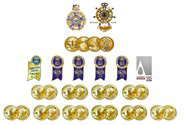
Fig. 3. Medal awards (Retrieved from https://www.Rūta.lt/apdovanojimai/ )
The positioning of the quality awards represents the brand as highly professional, which is important means for the persuasion of the Rūta’s strength, success, prestige and recognition. In this context, the medals function as a metaphorical representation of the company’s exceptional products and the accolades they have received. The medals visually convey that Rūta’s products are top-tier and recognised for their superior quality and excellence. The text along the awards reads as follows:
2) Rūta successfully operating since 1913, is proud of the awards it has won at various Lithuanian and international exhibitions and competitions. The company’s exceptional products have won more than 60 awards”.
We can also see from the verbal text, that the company is conceptualized as a HUMAN / CHAMPION, who is winning medals in various competitions. The medals can be interpreted as a visual representation of the source domain in the metaphor RŪTA IS RECOGNIZED/SUCCESSFUL WINNER. The link between brand and being a winner, a hard worker, represented by the medals, on the other, has reflections in the verbal context.:
3) “Knowledge, hard work and love for sweets – three cornerstones values that have accompanied Rūta since its foundation and won the recognition of sweets lovers”.
In texts (2) and (3), the word Rūta metonymically refers to the brand or company itself. By mentioning the brand name, the text indirectly references the company’s long-standing presence in the market and its success over the years. The name Rūta stands for the entire entity, representing its history, legacy, and reputation. Additionally, the mention of “60 awards” in the text also serves as a metonymy, as they represent the company’s achievements and recognition, excellence, innovation, and overall quality of their products in the form of medals and accolades. Overall, the multimodal metaphor and metonymy in the picture and accompanying text convey the message that Rūta is a well-established and highly regarded brand known for its exceptional products and numerous accolades.
Another multimodal metaphor, BRAND IS A PLANT / LIVING ORGANISM, can be found in a similar section of Rūta’s website, “About Us”. In the picture, a half-opened hyperbolised chocolate box, “Lietuva”, is represented on the background of greeneries – a forest and a possible lake nearby (Fig. 4).

Fig. 4. Plant a tree in Lithuania (Retrieved from https://www.Rūta.lt/)
The verbal text reads:
4) “Lithuania is a land famous for its wonderful landscapes, plains and hills, the greatness of forests, the abundance of lakes and the mystery of forests. We present the new collection of chocolates “Lietuva” and its mission - to contribute to replanting forests and reducing CO2 emissions in Lithuania. In cooperation with the “National Intangible Forest Support Fund”, we will plant 1 tree for every “Lietuva” collection of chocolates purchased.”
The presence of chocolates and trees in the picture suggests a multimodal metaphor CHOCOLATES ARE TREES/SUSTAINABILITY, where chocolates represent the product being promoted and trees symbolize the natural environment and sustainability. The juxtaposition of these two elements visually conveys the message that the brand’s chocolates are not only delicious treats but also environmentally conscious. The chocolates metaphorically represent the brand’s commitment to creating sustainable products, while the trees symbolize the positive impact on the environment.
The text emphasizes the connection between Lithuania’s landscapes, forests, and the brand’s new collection of chocolates called “Lietuva.” Here, “Lietuva” serves as a metonymy for Lithuania itself. The “Lietuva” represents the country’s cultural identity and its association with natural beauty and diverse landscapes. The mention of Lithuania’s landscapes, forests, and lakes highlights the brand’s intention to align its product with the natural environment and evoke a sense of national pride; therefore, the product for producer metonymies CHOCOLATES LITHUANIA for RŪTA and TREES for (LITHUANIAN) FOREST may be construed. The collaboration between the brand and the “National Intangible Forest Support Fund” can also be seen as a metonymy. This partnership represents the brand’s dedication to environmental conservation and sustainability. By mentioning the collaboration, the text indirectly refers to the larger initiative of replanting forests and reducing CO2 emissions in Lithuania. The cause-for-effect metonymy PRESERVATION for BUYING CHOCOLATES suggests that purchasing the “Lietuva” collection of chocolates contributes to the broader cause of environmental preservation.
2.2 Logo
As Koller (2009, p. 63) indicates, a logo is a central element of brand communication, usually multimodal, combining text and pictograms. They serve cognitive and emotional functions as “visual cues to recall previously received information.”
The name Rūta in the logo consists of connected letters, which creates an illusion of handwriting which implies conservative, personalized tradition (Fig. 5). The current logo was first introduced in 1993, along with the statement:
3) Rūta has once again became a factory producing exclusive, original sweets representing Lithuania”.
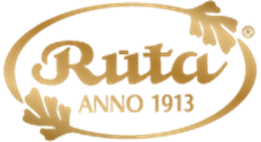
Fig. 5. The Rūta logo (Retrieved from https://www.Rūta.lt/)
The branches give the brand the characteristics of nationality and naturalness and emphasize longevity, traditions, and quality. It implies that Rūta held on to the traditional values for over a century, transferring those Lithuanian traditions from the past into the present day, holding on the naturalness and quality. The multimodal metaphor BRAND IS PLANT may be construed from the logo of the brand. The presence of the text “Anno 1913” within the logo signifies a multimodal metaphor BRAND IS a TRADITION/LEGACY. By including this text, the brand metaphorically conveys authenticity, timelessness, and expertise in the craft of creating sweets.
The text that accompanies the logo includes metonymies related to the brand and its identity: the brand name Rūta is used as a metonymy to represent the entire brand. It encompasses the brand’s reputation, values, and products. By using the brand name, the text indirectly refers to the identity and recognition associated with Rūta. The phrase “Factory Producing Exclusive, Original Sweets” acts as a metonymy INSTITUTION for PRODUCTS or/and INSTITUTION for PEOPLE to represent the brand’s expertise and commitment to creating high-quality, unique confectionery. It suggests that Rūta’s exclusivity and luxury are also metonymically connoted by the colour gold. In the phrase “Sweets representing Lithuania”, the country name Lithuania serves as a metonymy, symbolizing the brand’s connection to the country, its cultural heritage, people, and its representation through its sweets. The metonymies and the metaphor are interconnected and imply that Rūta’s products are not just confections but also reflect the essence and identity of Lithuania.
2.3. Layout
The layout is the third area where the multimodal metaphor is used in corporate branding discourse. As for the layout, Koller (2009) exemplifies the colours of the sub-headings, frames and bullet points. Other important layouts serving elements include lines, easily recognizable objects, etc., which play a crucial role in creating the cognitive effect on the viewer to see the depicted entities as belonging to the same category (Teng and Sun, 2002). Within the scope of the present investigation, we think it is important to analyze the websites’ visual aesthetics, imagery, composition and navigation menu, typography and textual elements and visual hierarchy to identify any potential multimodal metaphors and metonymies present in the layout.
Visual Aesthetics: The choice of colours, patterns, and visual styles evoke specific emotions or associations related to the brand. For example, in the case of Džiugas (Fig. 6) the use of warm, earthy tones, the pieces of roughly chopped cheese and the picturesque natural landscape with cows creates a sense of rustic authenticity and tradition.
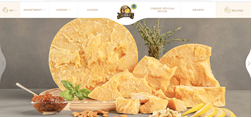
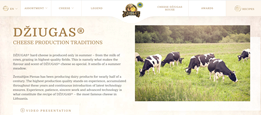
Fig. 6. Džiugas website (Printscreen, retrieved from https://www.Džiugashouse.lt//)
Sleek and modern design elements in the case of Pieno žvaigždės (Fig. 7), bright colours, and the text (Eng. “Taste from space. Fresh ice-cream from space”) emphasising the word “space” conveys a more contemporary and refined image of the brand. In the case of Rūta (Fig. 8), a clean and elegant design with soft pastel colours conveys sophistication and delicacy, aligning with the brand’s premium confectionery products.
Imagery: The selection of images on the website can also contribute to a multimodal metaphor. For Džiugas, images related to cheese production, natural landscapes, or culinary scenes evoke the senses and create associations with indulgence and pleasure. In the case of Rūta, the use of high-quality photographs of beautifully crafted sweets and elegant packaging serves as a multimodal metaphor for BRAND IS INDULGENCE and signifies the brand’s emphasis on quality and attention to detail.


Fig. 7. Pieno žvaigždės website (Printscreen, retrieved from: https://pienozvaigzdes.lt/lt/)
Composition and Navigation Menu: The sections presented in the navigation menu represent different aspects of the brand’s offerings, such as product categories, special collections, or brand stories which results in these categories functioning as metonymies. Menu items are a gateway to a specific facet of the brand’s world, guiding users to relevant content. On the other hand, a well-organized and structured layout conveys a sense of professionalism, reliability, and ease of use, signifying the brand’s reputation and customer-friendly experience. This might cue a multimodal metaphor BRAND IS A CARING FRIEND.


Fig. 8. Rūta website (Printscreen, retrieved from: https://www.Rūta.lt/ )
Typography and Textual Elements: The use of fonts, typography styles, and content placement contributes to metonymy. For instance, in the case of Rūta (Fig. 8) and Džiugas (Fig. 7), classic and elegant font symbolises the brands’ commitment to tradition and quality, while playful and informal typography in the case of Pieno žvaigždės (Fig. 7) suggests a more casual, informal and modern approach.
Visual Hierarchy: A hierarchy of information can be created by arranging and positioning various website elements, such as navigation menus, headings, and content sections. This hierarchy may serve as a metaphor for the brand’s values, objectives, or narrative. For instance, in the case of Džiugas and Rūta, the brands emphasise heritage; therefore, the design prominently features historical details and the brand’s history.
Conclusion
The findings of the research suggest that both verbal and pictorial modes play significant roles in constructing multimodal metaphors. Verbal modes, such as brand names, slogans, and textual descriptions, are used to convey specific messages and evoke associations. Pictorial modes, including images, logos, layouts, and colours, contribute to visual representations that complement and enhance verbal messages. The combination of these modes creates a rich and layered communication strategy.
Multimodal metaphors and metonymies were found to be instrumental in shaping the brand image of Džiugas, Rūta, and Pieno žvaigždės. These brands’ identities, emotional triggers, and guiding principles are all communicated to consumers through the creation of metaphors and metonymies. The businesses were able to establish distinctive brand identities that resonate with their target customers by strategically utilizing visual and verbal aspects. The analysis of visual and pictorial texts from the websites of the companies shed light on the distinctive branding tactics used by Džiugas, Rūta, and Pieno žvaigždės. It is significant to remember that the conclusions are unique to particular brands and could not be directly transferable to other corporate branding circumstances.
The impact of these multimodal metaphors and metonymies on influencing consumer perceptions, brand loyalty, and buying behaviour may be explored in more detail in further research. A deeper knowledge of the function and effects of multimodal metaphors and metonymies in corporate branding may also result from comparative research across various industries and cultural situations.
Sources
Saldainių fabrikas Rūta [Rūta Chocolate Masters]. Available at: <https://www.Rūta.lt/kategorija/naujienos/> [Accessed 30 January 2023]. (In Lithuanian).
Sūrio Džiugas namai [Džiugas House]. Available at: <https://www.Džiugashouse.lt/Džiugas/> [Accessed 13 February 2023]. (In Lithuanian).
AB Pieno žvaigždės [Joint stock company Pieno žvaigždės]. Available at: <https://www.vilniausduona.lt/apie-mus/> [Accessed 13 February 2023]. (In Lithuanian).
References
Alvarez, C., Fournier, S., 2016. Consumers’ relationships with brands. Current Opinion in Psychology, 10, pp. 129–135. https://doi.org/10.1016/j.copsyc.2015.12.017. Available at: <https://reader.elsevier.com/reader/sd/pii/S2352250X16000026?token=43C83943EE8C5AB8696BED38D9515E72F68D81C4B09FCA674F7A989587009E1705398EACEDAFA5E4807C90259D6C4BAC&originRegion=eu-west-1&originCreation=20230320144801> [Accessed 30 January 2023].
Askegaard, S., 2006. Brands as a Global Ideoscape. In: Brand Culture. London/New York: Routledge. eBook ISBN9780203002445. Available at: <https://www.taylorfrancis.com/chapters/edit/10.4324/9780203002445-1/introduction-jonathan-schroeder-miriam-salzer-m%C3%B6rling?context=ubx&refId=53c4994d-8ba6-4115-8881-1d255542828f> [Accessed 30 January 2023].
Baruch, Y., 2013. On logos, business cards: the case of UK universities. In: Artifacts and Organizations. Psychology Press, pp. 181–198.
Cappetta, R., Gioia, D. A., 2006. Fine Fashion: Using Symbolic Artifacts, Sensemaking and Sense Giving to Construct Identity and Image. In: Artifacts and Organizations: Beyond Mere Symbolism, pp. 199–219. Available at: <https://www.taylorfrancis.com/chapters/edit/10.4324/9780203759592-15/fine-fashion-using-symbolic-artifacts-sensemaking-sensegiving-construct-identity-image-rossella-cappetta-dennis-gioia> [Accessed 30 January 2023].
Forceville, Ch., 2006. Non-Verbal And Multimodal Metaphor. Cognitivist Framework: Agendas for Research. In: Cognitive Linguistics: Current Applications and Future Perspectives. Eds. Gitte Kristiansen, Michel Achard, René Dirven, and Francisco Ruiz de Mendoza. Berlin/New York: Mouton de Gruyter, pp. 379–402.
Forceville, Ch., Urios-Aparisi, E., 2009. Introduction. Multimodal Metaphor. Berlin, New York: Mouton de Gruyter, pp. 3–19.
Forceville, Ch., 2017. Visual and Multimodal Metaphor in Advertising: Cultural Perspectives. Styles of Communication, [s. l.], 9 (2), pp. 26–41. Available at: <https://pure.uva.nl/ws/files/25655841/4_Forceville.pdf> [Accessed 30 January 2023].
Forceville, C., 2021. Multimodality. In: The Routledge Handbook of Cognitive Lingustics. Routledge.
Gambier, Y., Juzelėnienė, S., Petronienė, S., 2021. Traduction et pratiques pluri-sémiotiques: exemples de peintures murales / Translation and Plurisemiotic Practices: Examples of Mural Painting. The Journal of Specialised Translation, 35, pp. 96–115. Available at: <https://jostrans.org/issue35/art_gambier.pdf> [Accessed 30 January 2023]. (In French).
Fox, R, Fox, J., 2004. Organizational Discourse: A Language-Ideology-Power Perspective. Westport, CT/London: Praeger.
Herrero-Ruiz, J., 2018. Exaggerating and mitigating through metonymy: The case of situational and CAUSE FOR EFFECT/EFFECT FOR CAUSE metonymies. Language & Communication, 62A, pp. 51–65. https://doi.org/10.1016/j.langcom.2018.07.001.
Johnson, M., 2013. The body in the mind: The bodily basis of meaning, imagination, and reason. University of Chicago Press.
Keller, K., 1993. Conceptualizing, Measuring, And Managing Customer-Based Brand Equity. The Journal of Marketing, 57 (1), pp. 1–22. https://doi.org/10.1177/002224299305700101.
Kappelhoff, H., Müller, C., 2011. Embodied Meaning Construction: Multimodal Metaphor and Expressive Movement. Speech, Gesture, and Feature Film. Metaphor and the Social World, 1 (2), pp. 121–153. https://doi.org/10.1075/msw.1.2.02kap.
Kashanizadeh, Z., Forceville, Ch., 2020. Visual and multimodal interaction of metaphor and metonymy in print advertising. Cognitive Linguistics Studies, 7 (1), pp. 78–110. https://doi.org/10.1075/cogls.00050.kas.
Koller, V., 2008. “Our customers embrace us as an essential partner”: Corporate Brands as Socio-Cognitive Representations. In: Cognitive Sociolinguistics: Language Variation, Cultural Models, Social Systems. Eds. Gitte Kristiansen and René Dirven. Berlin/New York: Mouton de Gruyter, pp. 389–418. https://doi.org/10.1515/9783110199154.
Koller, V., 2009. Chapter 3. Brand images: Multimodal metaphor in corporate branding messages. In: Multimodal Metaphor. Eds. Charles J. Forceville and Eduardo Urios-Aparisi. Berlin, New York: De Gruyter Mouton, pp. 45–72. https://doi.org/10.1515/9783110215366.2.45.
Kotler, P., Armstrong, G., 2010. Principles of Marketing. New York: Pearson education. Available at: <https://ipsedu.in/downloads/MBABooks/principles-of-marketing-philip-kotler.pdf> [Accessed 21 January 2023].
Lakoff, G., Johnson, M., 2008. Metaphors we live by. University of Chicago Press.
Littlemore, J., 2022. On the creative use of metonymy. Review of Cognitive Linguistics, 20 (1), pp. 104–129. https://doi.org/10.1075/rcl.00103.lit.
Littlemore, J., Tagg, C., 2018. Metonymy and text messaging: A framework for understanding creative uses of metonymy. Applied Linguistics, 39 (4), pp. 481–507. https://doi.org/10.1093/applin/amw018.
Littlemore, J., Pérez-Sobrino, P., 2017. Eyelashes, speedometers or breasts? An experimental cross-cultural approach to multimodal metaphor and metonymy in advertising. Textus, 30 (1), pp. 197–222. https://doi.org/10.7370/87674.
Musolff, A., 2006. Metaphor scenarios in public discourse. Metaphor and Symbol, 21, pp. 23–38. https://doi.org/10.1207/s15327868ms2101_2.
Phillips, B., McQuarrie, E. F., 2004. Beyond Visual Metaphor: A New Typology of Visual Rhetoric in Advertising. Marketing Theory, 4 (1–2), pp. 113–136. https://doi.org/10.1177/1470593104044089.
Pollaroli, Ch., Rocci, A., 2015. The argumentative relevance of pictorial and multimodal metaphor in advertising. Journal of Argumentation in Context, 4, pp. 158–199. https://doi.org/10.1075/jaic.4.2.02pol.
Radden, G., Kövecses, Z., 1999. Towards a Theory of Metonymy. Metonymy in Language and Thought, 4, pp. 17–60. https://doi.org/10.1075/hcp.4.03rad.
Rottner, N., 2022. Intermediality and Metaphoricity in Claes Oldenburg’s Poetry. Getty Research Journal, 15 (12022), pp. 1–227.
Rossolatos, G., 2018. Brand image re-revisited: a semiotic note on brand iconicity and brand symbols. Social Semiotics, 28 (3), pp. 412–428. https://doi.org/10.1080/10350330.2017.1329973.
Teng, N. Y., Sun, S., 2002. Grouping, Simile, and Oxymoron in Pictures: A Design-Based Cognitive Approach. Metaphor and Symbol, 17, pp. 295–316. https://doi.org/10.1207/S15327868MS1704_3.
van Leeuwen, T., 1999. Speech, Music, Sound. London: Macmillan.